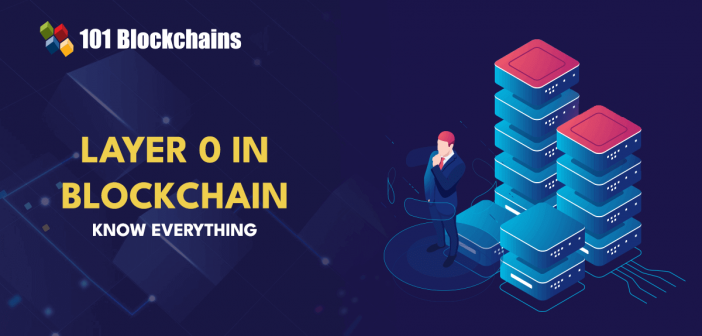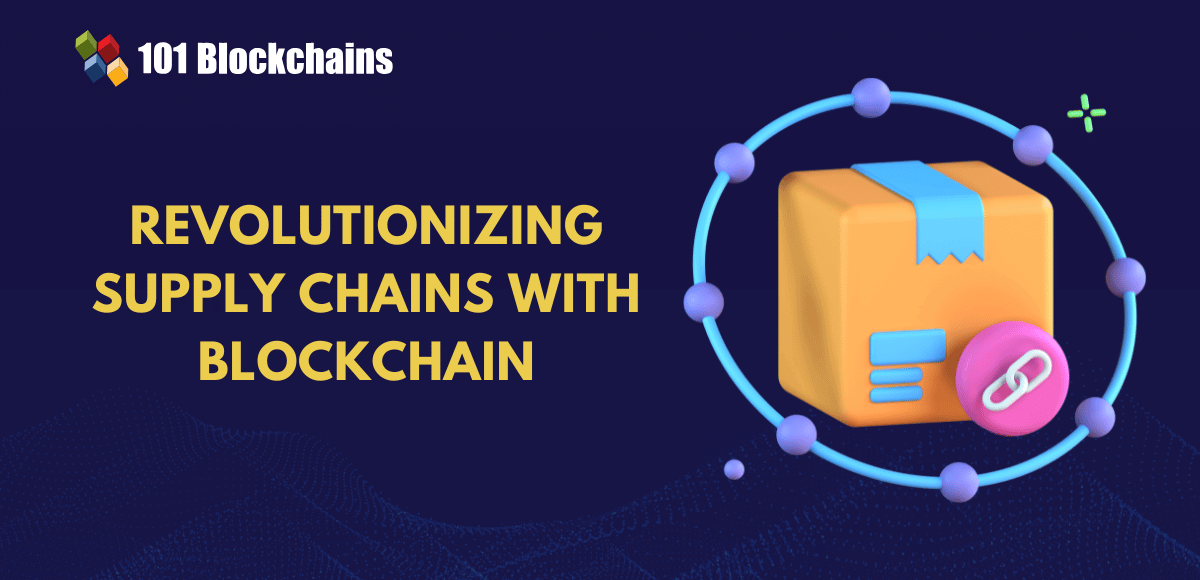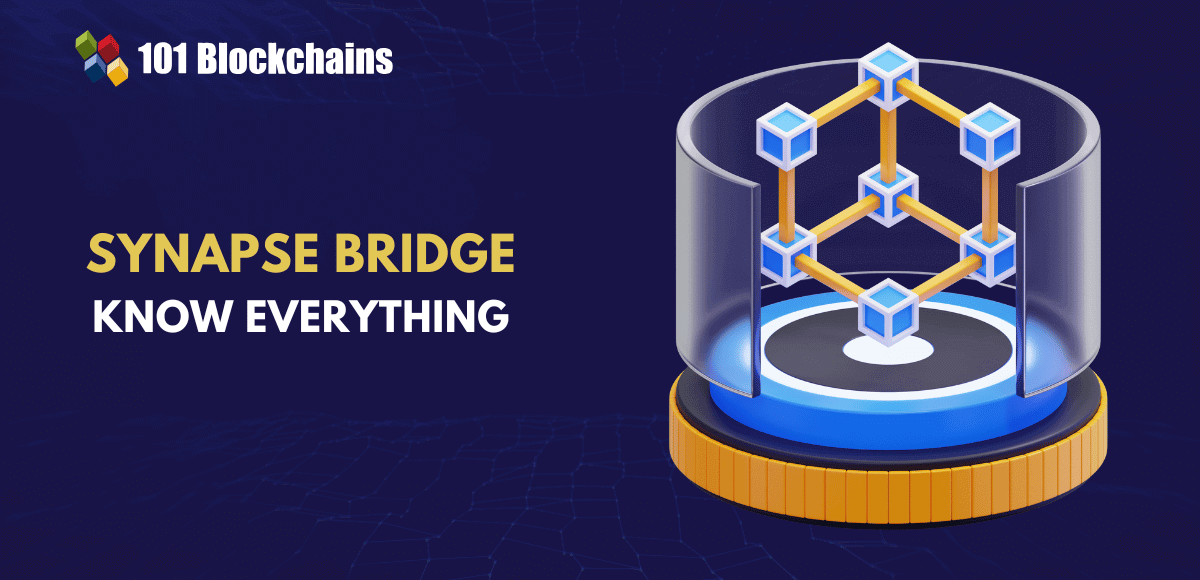Learn how blockchain truly works, master key definitions, and uncover what makes smart contracts so "smart." Dive into the fundamentals, gain valuable insights, and start your blockchain journey today!

- Blockchain
Georgia Weston
- on December 08, 2023
What Is Layer 0 in Blockchain?
The cryptocurrency and blockchain ecosystem has evolved by huge margins in the last few years. You must have noticed the sporadic growth in innovative advancements introduced by blockchain. At this point of time, questions like “What is a layer 0 blockchain?” have emerged as prominent points of discussion for blockchain professionals. Blockchain can support the transformation of banking services alongside exchanging digital art and trading financial products. What has been driving the innovation on blockchain-based products? The answer would point to blockchain infrastructure, which helps in supporting scalable and secure dApps. Some of the notable examples of blockchain networks include Ethereum and Solana. You can think of Ethereum and Solana as the layer 1 blockchain that could offer the infrastructure required for building and launching dApps. The dApps deployed on layer 1 blockchains are associated with the underlying consensus mechanisms of the underlying blockchain. However, you are here searching for a layer 0 blockchain guide due to certain reasons.
You might be seeking layer 0 blockchains as alternatives to layer 1 blockchain networks. The adoption of layer 1 networks has been increasing, thereby leading to a rise in value of native cryptocurrencies associated with the project. Let us learn more about the importance of layer 0 blockchain networks amidst the increasing hype around layer 1 blockchains.
Build your identity as a certified blockchain expert with 101 Blockchains’ Blockchain Certifications designed to provide enhanced career prospects.
What is the Problem with Layer 1 Blockchains?
The first step to learn layer 0 blockchain fundamentals involves a review of problems with layer 1 blockchains. It is important to note that the demand for dApps has been increasing and would lead to increased capital flow into the blockchain space for supporting development. The growing demand for layer 1 blockchains as infrastructures for dApps and web3 development has uncovered the pain points associated with layer 1 networks. For example, they would struggle to meet the requirements of developers alongside end users with contradictory views regarding the balance between scalability, decentralization, and security.
The necessity of blockchain layer 0 solutions emerges from the setbacks of layer 1 networks. One of the first limitations of layer 1 networks points to monolithic architecture. It implies that a single blockchain network serves as the stage for functioning of data availability, execution, and consensus layers.
The stacked design creates pressure on the system, thereby leading blockchains to compromise one of the elements to achieve the other two. For example, layer 1 blockchain networks would have to compromise on scalability to achieve decentralization or compromise with decentralization to ensure security.
Another notable reason to focus on layer 0 network alternatives is the lack of control over underlying architecture. One of the prominent setbacks of underlying infrastructure for dApps developers points to the rising gas fees on Ethereum network. As a result, it could lead to a rise in costs for using dApps on Ethereum.
Decentralized app developers also have to make compromises in the design of their dApps to ensure compatibility with layer 1 networks. It would also present limitations on the ability to explore different consensus mechanisms alongside experimenting with different token incentive models.
You can notice that the blockchain and web3 ecosystem relies prominently on layer 1 blockchains. On top of it, you could also notice the problems with tradeoffs due to the scalability trilemma in layer 1 blockchains. Therefore, it is important to learn about the alternatives to layer 1 blockchains.
What are Layer 0 Blockchains?
The growing interest in layer 0 blockchain projects has fuelled the demand for learning about layer 0 blockchain fundamentals. Layer 0 blockchain networks represent the base infrastructure and serve as the most crucial component to support blockchain networks and dApps in achieving unlimited scalability. At the same time, layer 0 blockchains could help in ensuring higher levels of censorship resistance and decentralization.
You might be eager to learn about layer 0 blockchain examples and their implications for scalability in blockchain networks. Layer 0 points at the type of protocol that can help developers in launching multiple layer 1 blockchain networks. Each layer 1 network can be tailored for achieving a specific task and could address the different dimensions in scalability trilemma.
In addition, the layer 1 networks associated with layer 0 network could also exhibit interoperability. It ensures that users can capitalize on the functionalities of multiple blockchain networks with the experience of using one network. Layer 0 blockchain networks have been powered with software development tool kits or SDKs.
The SDKs can help developers launch their own blockchain networks or layer 1 chains or sidechains, which stay connected with the layer 0 chain while working independently. You can think of layer 0 chains as the infrastructure to launch new blockchains, such as Bitcoin or the Ethereum network.
Some of the popular layer 0 blockchain networks include Polkadot and Cosmos. Every layer 0 blockchain features a unique implementation and serves distinct approaches for helping developers launch their own blockchains.
Learn about the fundamentals of blockchain technology, use cases, key elements and many more through Blockchain Fundamentals Presentation
Importance of Layer 0 Blockchains
The next important aspect you must learn in a layer 0 blockchain guide would point at the importance of layer 0 blockchains. Layer 0 blockchain networks have the capabilities for resolving three crucial problems of web3 development such as scalability, interoperability, and flexibility. Here are some of the notable factors that prove the importance of layer 0 blockchains.
-
Scalability Trilemma
One of the foremost reasons to learn layer 0 blockchain fundamentals is the scalability trilemma. It refers to the trade-offs between security, decentralization, and scalability during the design of a blockchain and defining the on-chain rules. Centralization leads to increased speed and a reduction in censorship resistance and security. Decentralization ensures a reduction in speed alongside increasing security and censorship resistance. Scalability trilemma implies that you cannot achieve perfect decentralization without compromises in scalability.
The scalability trilemma is a prominent concern for monolithic blockchain architecture, where a single network manages all critical functions. As a result, it could increase the chances of congestion alongside creating difficulties for scalability. The functionalities of a blockchain layer 0 design ensure better scalability by increasing the transaction throughput. The transaction throughput points to the total number of transactions that a network can manage simultaneously.
-
Interoperability
Interoperability is the capability of computer systems with different programming for interpretation and exchange of information without friction. One of the prominent highlights of a layer 0 network is the facility of interoperability between different layer 1 blockchain.
You can assume that layer 1 blockchains as large cities that should be connected to each other through bridges for economic activity. Layer 0 blockchain networks could use different iterations of cross-chain transfer protocol to enable the transfer of tokens.
Layer 0 blockchains could facilitate transfer of data from layer 1 to layer 0 and layer 0 main chain to layer 1 networks. In addition, layer 0 networks also facilitate interoperability through the flexible data and token transfer between layer 1 blockchains. Cosmos is one of the popular layer 0 blockchain examples for understanding how layer 0 empowers interoperability.
Cosmos utilizes the Inter-Blockchain Communication or IBC protocol for classifying layer 1 networks as ‘zones.’ The ‘zones’ could communicate with each other and transfer value by utilizing the ‘HUB’ main chain as a central intermediary and checkpoint. Similarly, Horizen also utilizes the Cross-Chain Transfer Protocol or CCTP for helping sidechains in communicating and transferring tokens to the main chain.
Enroll now in the Blockchain Scalability and Interoperability Mastery Course to learn the skills needed to develop faster, scalable, robust, and interoperable dApps.
Working Mechanism of Layer 0 Blockchains
The most important highlight in a guide on layer 0 blockchains points at their working mechanism. You can understand the working mechanism of layer 0 blockchain projects with a review of the important components in layer 0 architecture. The three important components of layer 0 protocols include the main chain, side chains, and a cross-chain transfer protocol. The three-component model for explaining the layer 0 blockchain architecture provides a simple understanding of their working mechanism. Each component in the architecture of a layer 0 protocol serves distinct functionalities.
-
Main Chain
The responses to “What is a layer 0 blockchain?” invite attention to the functionality of the main chain. It serves as the primary blockchain or the layer 0 blockchain, which stores all the transaction data from different layer 1 chains.
-
Sidechains
Sidechains are independent layer 1 networks that have their own collection of validator nodes and can run their independent consensus mechanisms. The sidechains do not depend on the main chain for security. However, they would share the security of the primary chain as it is the most decentralized and biggest chain.
Sidechains in a layer 0 network could share security in different ways. For example, users could stake the native token of the layer 0 chain for becoming a validator on a layer 1 network. It implies that users could lose their layer 0 token stake and their layer 1 stake for submitting fraudulent transactions.
On the other hand, layer 1 blockchains could also periodically share their network state, transaction history, and updated record of account balances with layer 0. It helps in keeping a backup with a network with more security for scenarios where the layer 1 networks are compromised.
-
Cross-Chain Transfer Protocol
The next crucial component in the architecture of blockchain layer 0 networks is the cross-chain transfer protocol. It is important to note that the cross-chain transfer protocol could appear in different forms in different layer 0 networks. The primary objective of the cross-chain transfer protocol is the flexibility for enabling transfer of tokens and different forms of data between blockchains in a completely secure and trustless manner. In the case of Cosmos, the cross-chain transfer protocol is Cosmos IBC. Avalanche uses the Avalanche Warp Messaging protocol, while Polkadot uses the Polkadot XCMP protocol.
Start learning Blockchain with World’s first Blockchain Skill Paths with quality resources tailored by industry experts Now!
What are the Advantages of Layer 0 Blockchains?
Layer 0 blockchains have emerged as a more scalable and efficient alternative in the blockchain ecosystem. They can help in managing large volumes of transactions alongside serving the advantages of better privacy and security. As a result, everyone wants to learn layer 0 blockchain basics and how they support the existing blockchain ecosystem. Here are some of the most noticeable advantages of layer 0 blockchains over traditional blockchain networks.
-
Better Performance and Speed
The first entry among the important benefits of layer 0 blockchains points to the improvements in performance and speed. Layer 0 blockchains utilize different technologies such as parallel processing and sharding for optimization of data storage and consensus processes for increasing transaction throughput.
-
Improved Privacy and Security
Layer 0 blockchains could offer better privacy and security by using cryptographic technologies such as multi-party computation and zero-knowledge proofs. The use of cryptographic technologies helps in avoiding the concerns of fraud and security breaches. As a result, layer 0 blockchain projects are suitable for enterprise applications, which demand better data privacy and security.
-
Cost Reduction
The value advantages of layer 0 blockchain networks in terms of cost point to improvements in performance and scalability. As a result, users could find lower transaction fees alongside reductions in other costs related to the use of blockchain networks. It helps ensure the accessibility of blockchain-based solutions for businesses and individuals.
-
Seamless Integration with Different Blockchains
The best highlight in a layer 0 blockchain guide would point to the facility of seamless integration with different blockchains. Layer 0 blockchains provide exceptional ease for integration of decentralized applications and services with legacy systems. The flexibility of seamless integration with other blockchains enables better growth and adoption of blockchain technology.
Start learning Blockchain with World’s first Blockchain Career Paths with quality resources tailored by industry experts Now!
Conclusion
Layer 0 blockchains are the beginning of a new chapter in the world of blockchain and web3. The primary objective of a layer 0 network revolves around addressing the issues pertaining to compatibility and size of transactions. Some of the prominent advantages of layer 0 blockchains point to conclusive improvements in scalability of blockchain networks.
Popular examples of layer 0 blockchains, such as Cosmos and Polkadot, show that the blockchain ecosystem has embraced layer 0 networks. However, it is also important to learn about the working mechanisms of layer 0 networks along with the important components in the layer 0 architecture. Learn more about the advantages of layer 0 networks to identify their importance for web3 development. Dive deeper into the details of some popular examples to discover the potential of layer 0 blockchains right now.
*Disclaimer: The article should not be taken as, and is not intended to provide any investment advice. Claims made in this article do not constitute investment advice and should not be taken as such. 101 Blockchains shall not be responsible for any loss sustained by any person who relies on this article. Do your own research!






